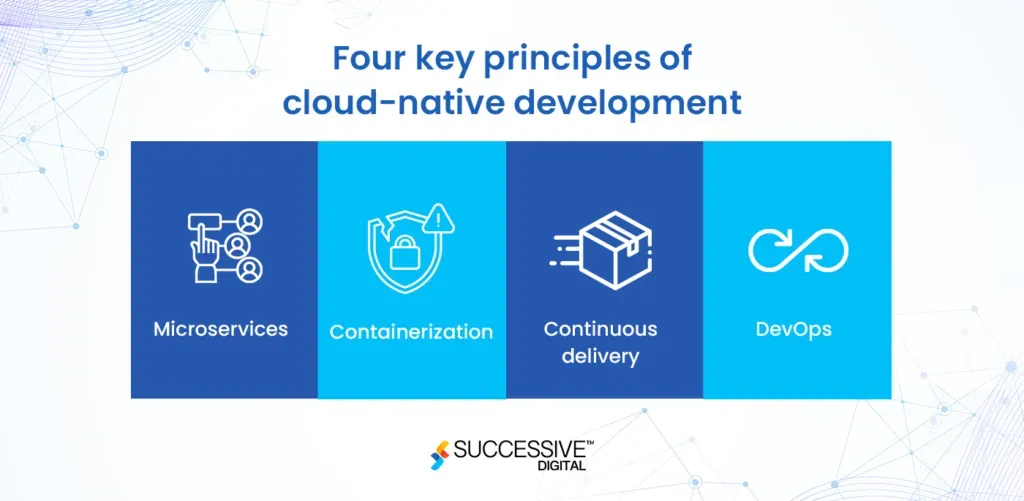Cloud-native scalability is more than a high-traffic badge; it is a design philosophy that lets software grow with demand while preserving reliability. When you build for the cloud, you want applications that can handle sudden spikes, degrade gracefully when necessary, and recover quickly from failures. This is the essence of scalable cloud design paired with resilience. In this guide, we explore practical strategies and patterns to design software that scales horizontally, remains robust under pressure, and delivers a consistent user experience across environments. By incorporating cloud-native resilience, microservices scalability, Kubernetes scalability best practices, and fault-tolerant cloud architecture, teams can bridge velocity with reliability.
Another way to frame this is elastic scaling in cloud-native ecosystems, where services can expand across nodes and regions without interrupting operations. The emphasis shifts from a fixed capacity mindset to decoupled, observable systems that respond to load with minimal latency. Key enablers include container orchestration, service meshes that govern traffic, and end-to-end event-driven patterns that smooth bursts and prevent cascading failures. This approach emphasizes resilience engineering, automated recovery, and continuous testing to ensure that growth never comes at the expense of availability. By aligning architecture with flexible data strategies and reliable deployment practices, teams can deliver steady performance even as demand evolves.
Cloud-native scalability and resilience: designing for growth without sacrificing reliability
Cloud-native scalability is more than a badge on performance graphs; it is a design philosophy that ensures software grows with demand while preserving reliability. In practice this means building stateless services that can be replicated easily, storing state in external databases or caches, and embracing idempotent operations to tolerate retries. By decoupling components and adopting horizontal scaling, teams can add capacity by increasing the number of service instances behind a scalable orchestrator, rather than forcing a single machine to handle all traffic. This approach aligns with cloud-native resilience, where the system remains robust in the face of partial failures and maintains a consistent user experience across environments.
Real-world performance also depends on data partitioning, asynchronous processing, and effective caching. Partition data wisely to avoid hot spots and use event-driven flows to absorb bursts without overwhelming downstream services. Asynchronous patterns reduce backpressure and enable graceful degradation when spikes occur. Observability, automated capacity management, and disciplined testing are the glue that keeps cloud-native scalability reliable, ensuring that even as demand grows, the system remains fault-tolerant and recoverable. In this context, microservices scalability and cloud-native resilience work hand in hand to deliver predictable latency and steady throughput.
Kubernetes scalability best practices for fault-tolerant cloud architecture and microservices scalability
Implementing Kubernetes-centric scalability requires leveraging Horizontal Pod Autoscaling (HPA) and Vertical Pod Autoscaling (VPA) to match capacity with load. Readiness and liveness probes help ensure traffic only reaches healthy pods, while resource requests and limits prevent noisy neighbors and contention in busy clusters. Rolling updates, canaries, and blue/green deployments reduce risk when pushing changes, and service meshes or API gateways provide resilient, secure service-to-service communication. Together, these patterns embody Kubernetes scalability best practices and support a fault-tolerant cloud architecture that scales with demand.
Beyond deployment techniques, design for data stores, caching, and multi-region redundancy to minimize latency and regional outages. Observability is essential: instrument critical paths, establish SLI/SLOs, and use tracing to see how requests traverse the system under load. Chaos engineering, canaries, and blue/green testing validate recovery paths, while capacity planning and cost awareness ensure sustainable growth. In a cloud-native context, reliable orchestration coupled with robust fault isolation—bulkheads, circuit breakers, and deterministic retries—creates a resilient, scalable platform suitable for microservices scalability across regions.
Frequently Asked Questions
What is cloud-native scalability and how do cloud-native resilience and microservices scalability relate to it?
Cloud-native scalability is the ability for services to grow with demand while maintaining reliability. It relies on stateless design, external state stores, and horizontal scaling driven by orchestrators such as Kubernetes. When paired with cloud-native resilience, the system can absorb bursts, degrade gracefully, and recover quickly from failures. Microservices scalability supports this by letting independent services scale in response to load, preventing a single bottleneck from affecting the whole application. Practical patterns include autoscalers, circuit breakers, bulkheads, retries with backoff, idempotent endpoints, and strong observability to detect capacity trends and failure modes early.
What are the Kubernetes scalability best practices for achieving cloud-native scalability and a fault-tolerant cloud architecture?
Key practices include: Horizontal Pod Autoscaling (HPA) and Vertical Pod Autoscaling (VPA) to match capacity with demand; readiness and liveness probes to route traffic only to healthy pods; proper resource requests and limits to prevent noisy neighbors; deployment strategies such as rolling updates, canaries, and blue/green deployments; multi-region/multi-zone distribution for latency and resilience; service mesh and API gateways for resilient traffic routing and telemetry; data stores and caching with partitioning to scale reads and writes; and resilience patterns like circuit breakers, bulkheads, idempotent retries, and graceful degradation. Pair these with strong observability and chaos testing to validate fault tolerance under pressure.
| Topic | Summary |
|---|---|
| Definition | Cloud-native scalability is a design philosophy that enables software to grow with demand while maintaining reliability, resilience, and a consistent user experience. |
| The Challenge | Horizontal scaling is preferred over vertical scaling to avoid single points of failure; scalability must be integrated with resilience to prevent cascading outages and ensure recovery. |
| Foundational Principles |
|
| Key Patterns for Resilience |
|
| Infrastructure and Orchestration (Kubernetes-Centric) |
|
| Observability, Testing, and Continuous Improvement |
|
| Practical Roadmap |
|
Summary
Conclusion: Cloud-native scalability is an ongoing discipline. By designing services to be stateless, partitioning data effectively, embracing asynchronous patterns, and embedding resilience into every layer, you create systems capable of gracefully handling growth and unexpected disruptions. The most robust architectures balance scalable capacity with robust fault tolerance, underpinned by observability, automated capacity management, and disciplined testing. When cloud-native scalability and resilience are integrated from the ground up, organizations can deliver consistent performance, even as demand evolves. This approach aligns engineering with business goals, enabling faster innovation, better user experiences, and a more resilient digital presence.



